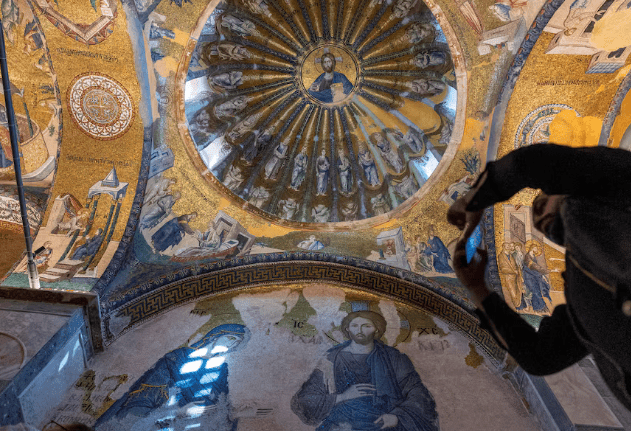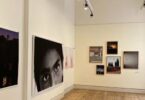ISTANBUL (Reuters) : Turkey has opened the ancient Chora church, one of Istanbul’s most celebrated Byzantine buildings, to Muslim worshippers after it was used as a museum for more than 70 years, making it the second such major conversion under President Tayyip Erdogan.
Erdogan turned Istanbul’s world-renowned Hagia Sophia from a museum into a mosque in 2020 in a ceremony attended by tens of thousands of people.
That move was criticised by church leaders and some Western countries, who said reconverting Hagia Sophia risked deepening religious rifts. Erdogan said this was interference in sovereign rights and that he was determined to protect Muslims’ rights.
The original Chora, or Kariye, church dates back to the 4th Century and was turned into a mosque by the Ottomans. It became a museum in 1945 and Erdogan signed an order in 2020 converting it back into a mosque. It reopened on Monday after restoration.
The outer halls were preserved as a museum, with visitors able to view the prized mosaics that dot the ceiling unhindered. Curtains concealed the mosaics in the building’s prayer section, in line with Muslim traditions.
Ferdy Simon, a British tourist, said he would have preferred the building to remain as a museum so that people could see the mosaics and frescoes there. “It seems to be a political gambit,” he said, speaking outside the Chora.
‘Political gain’
Ugur Gokgoz, a Turkish man who came to pray, said it was Turkish people’s right to use the Chora as a mosque, adding that the artefacts inside the museum were preserved.
“There was a small section reserved for prayer. At the end, they didn’t tear everything down and turned it into a mosque,” he said.
A church was first built at the site in the 4th century, but most of the existing building dates to an 11th century church that was partly rebuilt 200 years later following an earthquake.
The Church of the Holy Saviour in Chora, built near the ancient city walls of Constantinople, contains 14th century mosaics and frescoes showing scenes from biblical stories.
They were plastered over after the Ottomans conquered the city in 1453 but brought to light when – like Hagia Sophia – it was converted to a museum by Turkey’s secular republic in 1945.
Burcin Altinsay Ozguner, Turkey head of the International Council on Monuments and Sites, said the Chora artefacts are unique and the best way to make them available for researchers is to maintain the building as a museum.
“Of course, there are political gains behind it,” she said, adding there was no obvious need for a mosque in the case of both Hagia Sophia and Chora, with mosques right next to them.







